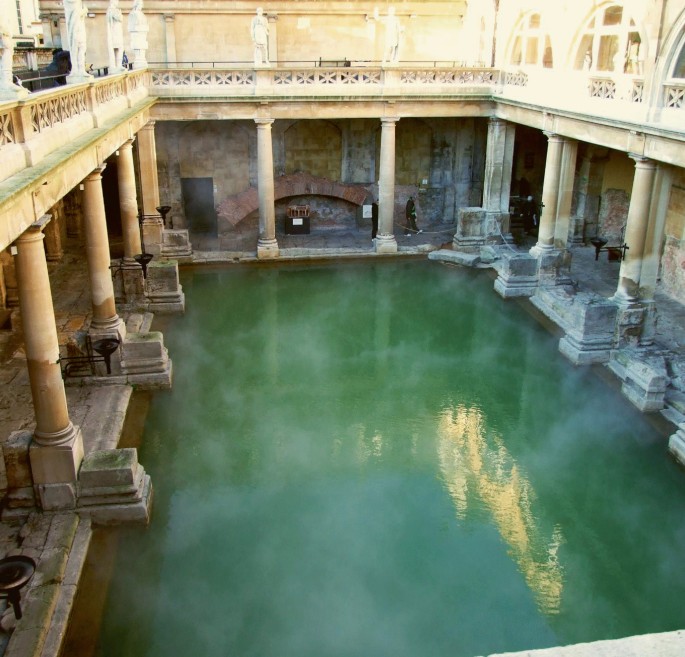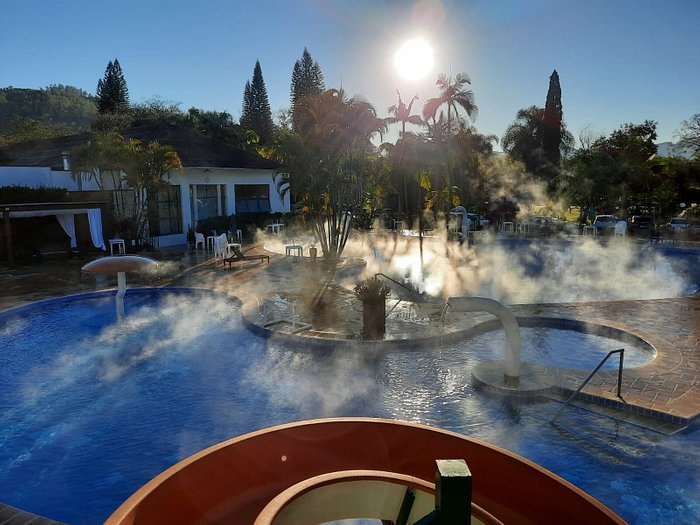In Search of Spain's Fountain of Health

By: Habeeb Salloum/Arab America Contributing Writer
No sooner had we left Murcia, noted for its historic churches then we were in the surrounding huerta (irrigated orchards and gardens), on our way to Archena, well known for its mineral water baths. As many have done through the centuries, we were travelling to visit this natural healing spot, called by some ‘the Fountain of Health’.
Around us the rich-looking strips of greenery were encircled by semi-desert land and, in the distance, stretched the barren hills. It had not rained for sometime and this driest part of Spain was even more arid than usual. There is little doubt that if it had not been for the Arab-introduced irrigation system, the whole countryside would have been a lifeless land.
In less than a half hour, after passing through the town of Archena, we stopped at its Spa – two km away. After parking our mini bus, we walked a short distance to a 3-star hotel complex, located next to the Segura River. Seemingly, enhancing its healing waters, is its garden of tropical plants and colourful flowers, overshadowed by eucalyptus, lemon, orange and palm trees – a quiet oasis of luxurious vegetation. Managed as one unit, the hotels are where clients stay when they travel to the baths for rest or treatment.
Archena has the oldest baths in Spain. The Romans discovered the healing properties of their medicinal waters over 2000 years ago and built a spa, principally for their soldiers. The Moors continued using their waters for health purposes and when they were gone, the baths were taken over by the Knights of Santiago. Later on, they came under the control of the Holy Order of Saint John who used their waters to cure certain types of wounds.

In the 19th century, the structures of the Archena Spa underwent lavish architectural and conceptual changes and became a place for cure, rest and luxury – patronized by the wealthy. Years later, with the arrival of beach tourism, the baths lost favour until a few decades ago when the virtues of their waters began to again entice clients.
We began our tour at the 4-star Hotel Termas – the crown jewel of the Spa, under which are located the springs and the bath services, utilized by the entire complex. Despite renovations, its colourful Moorish style decorations were preserved. The most striking of these embellishments are the dome of the main stairway and a replica of the fountain found in the Patio de los Leones of Granada’s Alhambra.

Beyond this fountain, we entered the treatment area – a world of water, steam and spray. In every room, the members of the staff were young, but most of the patients were elderly. Some were bathing; some were breathing by way of sprays the mineral waters; while others were being treated with mud massages.
The crystal-clear waters of the Archena Spa with a temperature of some 52 C contain a high degree of chloride, calcium, fluorine, iodine, lithium, sodium and sulphur. They are especially recommended for treating the nervous and respiratory systems, dermatological problems, rheumatism, recovery from post-traumatic process and locomotor system surgery. In addition, the Spa has a complementary program for physiotherapy and beauty treatments. The therapy services, based on the use of a hydrothermal method that can be reinforced by other techniques, operate all year-round.
The Spa has its own medical team composed of three specialists in hydrotherapy and physiotherapy. Before travelling to the baths, the clients are advised to bring their recent medical reports with them. Upon arrival they are checked by a doctor who prescribes the specific type of personalised treatment needed.
On the other hand, some people come to the Spa simply to seek rest and relaxation. Nevertheless, most clients who travel to the baths are looking for a cure or improvement of their ailments, or the prevention of a disease from becoming chronic. The majority of therapies, to be effective, must be undertaken for a period of from two to three weeks.
The treatments at the Spa are based on two fundamental therapeutical agents: medicinal mineral water and its mud. For the hydrothermal techniques: 10-to-30-minute baths, adjusted to the need of each client, at a temperature of between 38 C and 41 C; water jets at a pressure of one to three atm; a 15-minute mud massage; and a number of other procedures, are applied.
In the case of respiratory affliction, collective spraying in a room full of mist; naso-pharyngeal and sonic spraying; and a number of other approaches are employed, depending on the ailment. For those who require physiotherapy services the staff provides adequate expertise for the recovery of functionality and the general tonification of the body.
Tourists, for the most part from Spain, have travelled to to Archena to seek the cures of the healing waters of its baths. However, times have changed where new clients from northern Europe and, lately, from North America have discovered its charm.
With an annual average temperature of 17 C and 2,769 hours of sunlight, Archena is an ideal site for a winter cure of maladies for those who live in cold climates.
After touring the baths, we rested awhile in its garden, then relaxed for a time by the Spa’s swimming pool of thermal water, kept at 33 C. As we got up to leave, Fernando, one of the bath’s officials who spoke perfect English and had been seduced, after a visit to Canada, by Niagara Falls, summed up his feelings: “You have the greatest water falls on earth, but we have one of the top healing baths in Spain. Our waters are not just for the eyes of tourists. If they do not totally cure, they alleviate the problems of the sick.”








